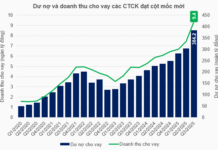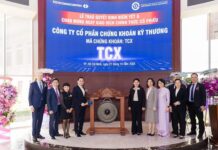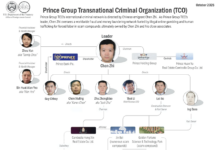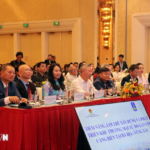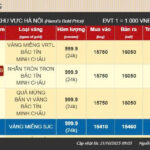This was emphasized by Dr. Nguyen Quoc Hung, Vice Chairman and General Secretary of the Vietnam Bank Association, at the seminar “The Role of Human Resource Training for Banks in Supporting Businesses to Take Advantage of FTAs” held by Cong Thuong Newspaper on the afternoon of December 2.

Dr. Nguyen Quoc Hung, Vice Chairman and General Secretary of the Vietnam Bank Association (center) speaks at the seminar.
Information shared at the seminar revealed that participation in Free Trade Agreements (FTAs) such as CPTPP, EVFTA, and UKVFTA would bring about strategic changes to enhance economic cooperation and remove previous tariff barriers that hindered trade among nations.
However, along with the opportunities, these FTAs also present challenges, and synchronized solutions are needed to accelerate the integration process.
Delving deeper into this issue, Dr. Nguyen Quoc Hung, Vice Chairman and General Secretary of the Vietnam Bank Association, affirmed that import and export is one of the priority areas for the banking sector. The sector has implemented numerous policies to support import-export businesses in accessing capital as conveniently as possible.
In addition to collateral-based lending, businesses can also borrow using their inventory, letters of credit (L/Cs), unsecured loans, or even export contracts. Banks also offer low-interest rates for export businesses, with some banks providing loans at an interest rate as low as 3.7%/year.
Despite these efforts to reduce interest rates, Dr. Hung noted that the credit balance for import and export businesses in relation to FTA enterprises has not met expectations.
“The credit balance for import and export with FTA enterprises is currently over VND 300,000 billion, accounting for about 2.1% of the total outstanding debt of the economy. I believe that this does not meet the actual requirements for import and export in general and FTAs in particular,” said Dr. Hung.
Dr. Hung further stated that while the banking sector is making efforts to provide loans, it also has to consider the input and output and the economic equation. Therefore, enterprises themselves need to recognize both the opportunities and challenges presented by joining these trade agreements. Along with the opportunity to eliminate tariff barriers, businesses must also meet stringent requirements from partners regarding product quality, cost, and sustainable development factors, among others.
Consequently, preferential mechanisms from the banking sector alone are insufficient, and a synchronized effort involving the government, multiple ministries, and the enterprises themselves is necessary.
For instance, when participating in FTAs, enterprises need to understand the customs and requirements of exporting countries, as well as product quality and cost, to meet the expectations of foreign partners and prevent instances of products being exported and then returned. This also relates to the enterprises’ business performance and the banks’ ability to recover capital.
To better support import and export businesses, Dr. Hung proposed that the government should consolidate the Small and Medium Enterprise Guarantee Fund to ensure it fulfills its proper role. Recognizing that enterprises participating in FTAs are an indispensable part, the fund should prioritize supporting these businesses.
Regarding human resource training, the seminar’s theme, Dr. Hung affirmed that training is a crucial task in any field. In the banking sector, training is mandatory. No credit institution can aim for stable development without valuing training. For instance, the four state-owned commercial banks have established four training centers akin to universities, where bank officers receive specialized training in their respective fields…
“FTAs present opportunities, and if we don’t seize them, we will be left behind,” said Dr. Hung. “The General Secretary To Lam has also put forward significant directions for reform and innovation to boost economic growth. Supporting FTA enterprises is also an opportunity for the FTAs themselves to grow… It’s time to change our mindset. Enterprises also need to improve and enhance their capabilities to meet the requirements of foreign partners and deeply engage in the global supply chain.”
The Free Trade Zone: Opportunities and Solutions Realized
In the era of global economic integration, free trade areas have emerged as a potent model to bolster import-export activities and logistics development.
Crafting a Captivating Workforce for the High-Speed Rail Project: A Prelude to Success
The government proposes the construction of a new double-track railway with a standard gauge of 1,435 mm, electrified and designed for speeds of up to 350 km/h. The construction is slated to begin in 2027, and one of the key challenges is the preparation of a skilled workforce, which is estimated to require over 14,000 personnel.
The Alluring Lure of Real Estate: Why Banks Are ‘Pouring Money’ Into This Sector
The banking industry’s reliance on real estate lending is a well-known phenomenon, and it continues to be a prominent feature in the second quarter of this year. For many banks, real estate has been the savior, driving credit growth and keeping their books healthy.















